In less than a 20-minute read, this AR-15 Beginner’s Guide on how to use an AR-15 will cover all the critical buttons and levers that make your gun tick like a clock, as well as a few basics on safe handling, clearing jams, and of course a couple of juicy tips no one talks about.
No time-consuming technical manuals to interpret here, this is the info you need for today’s AR-15. Let’s get started.
Whether it’s your first rodeo or you’ve been here before, we always recommend a quick brush-up on the. basic rules of gun safety before diving deeper.
Table of Contents
Overview of Main AR-15 Parts
Alright, before we get into slinging lead, let’s go over the main parts of your AR-15 real quick. There’s a bunch of switches and buttons on that bad boy that control how it works. I’ll give you a fast rundown of the essentials so you don’t get lost – safety first!
Safety Selector
Found on the left side (sometimes the right also if you have a fancy ambidextrous setup) of the receiver, it rotates between “Safe” and “Fire”. Always keep it on “Safe” until you’re ready to shoot.
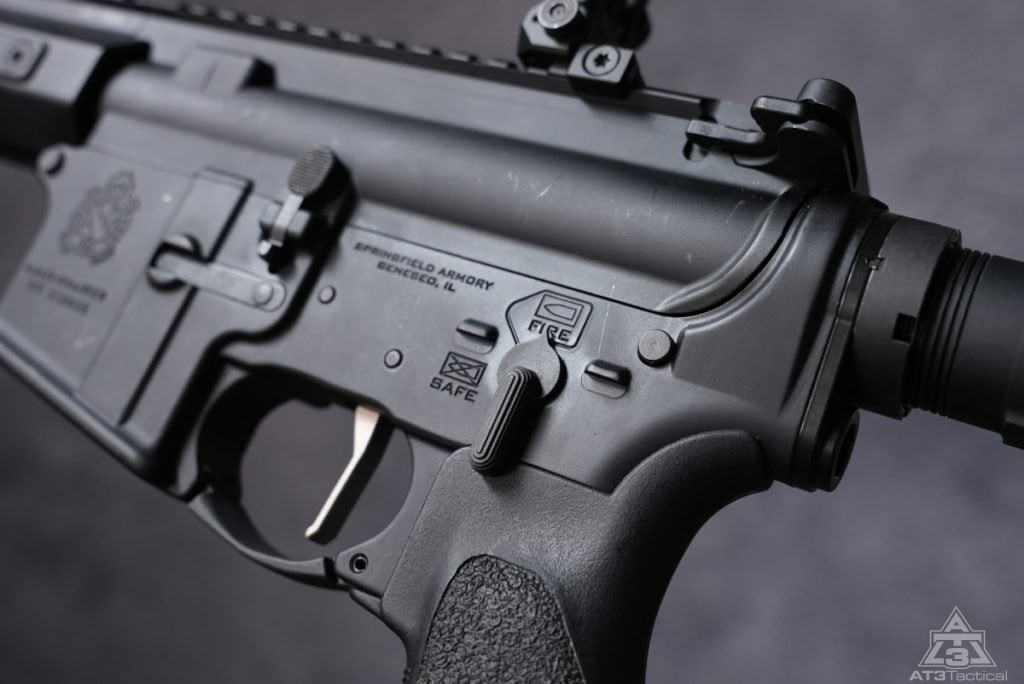
Trigger
Seems pretty obvious but this is squeezed when ready to fire. The AR-15 is semiautomatic, so every trigger pull fires just one round.
Triggers vary in shape and configuration. Don’t sweat the details. Just know they come in different pull weights and stages. We’ve covered triggers in-depth elsewhere if you want suggestions.
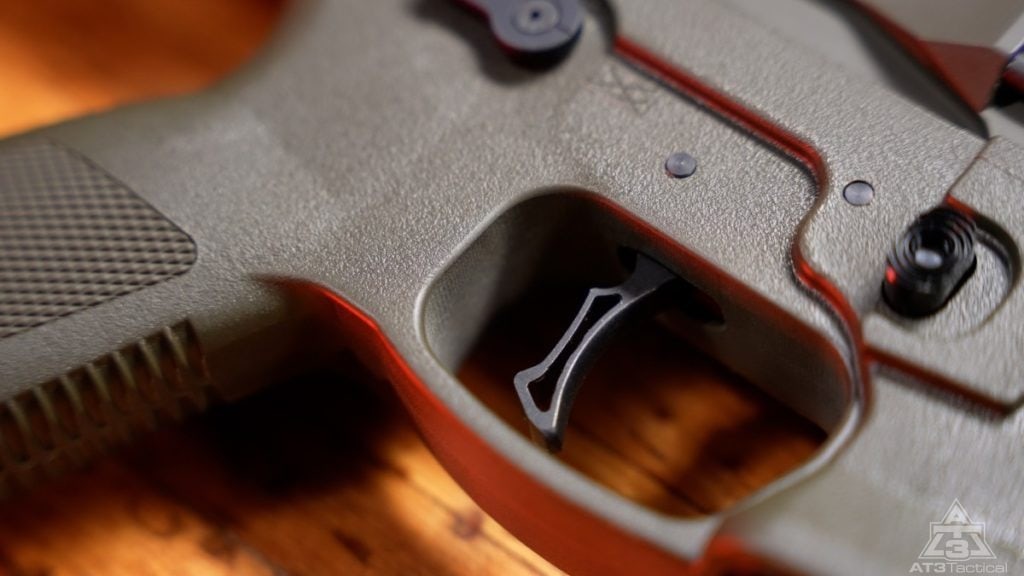
Magazine Release
Push this button near the trigger guard on the right side of the receiver to eject an inserted magazine. This is the only function of this button. Simple as that.
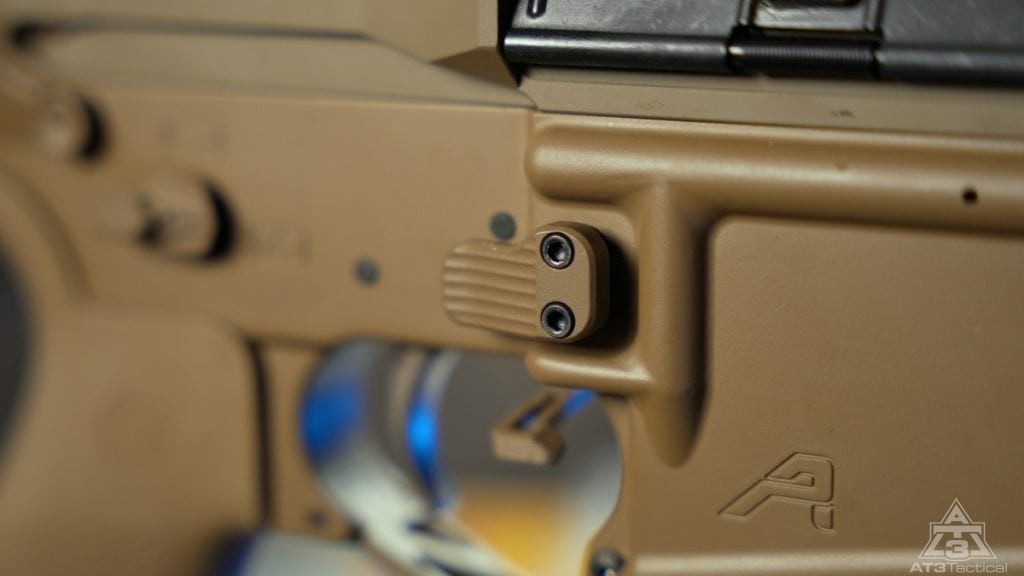
Bolt Catch
Your bolt catch is what is used to lock your AR-15 bolt to the rear. It resides on the left side of the receiver and when pressure is applied to the bolt catch it locks the bolt back and tells you you’re empty.
If the bolt is already locked to the rear pushing the upper portion of the catch will send the BCG forward.
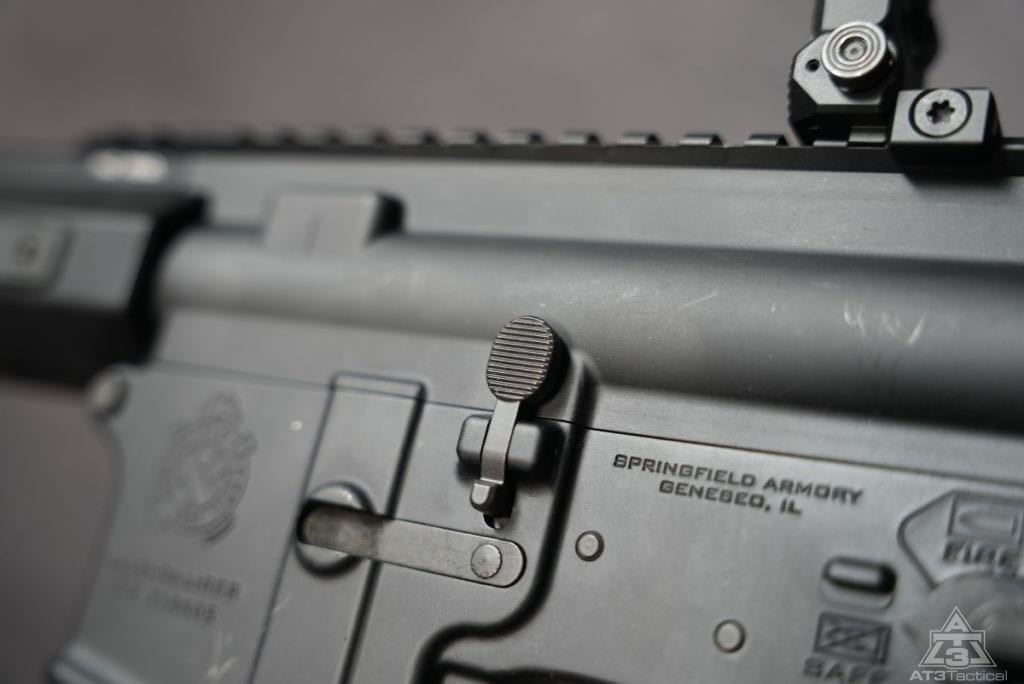
Charging Handle
The charging handle is usually a favorite to get swapped out for a more personalized touch but it’s so much more than a piece just for looks. Pull this back to chamber a round, clear jams, etc.
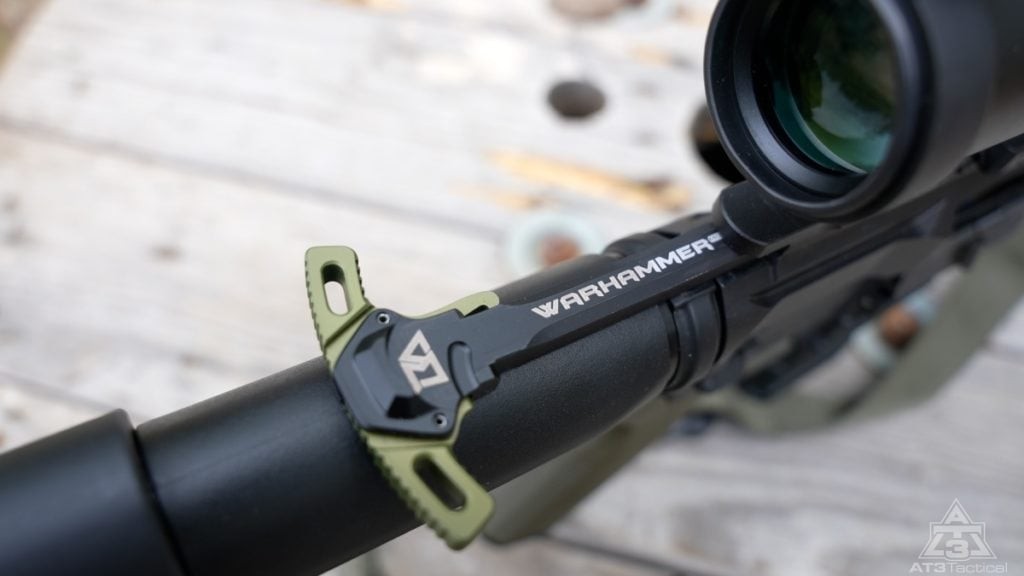
Forward Assist
Arguably one of the biggest and most controversial buttons found on the AR15, the forward assist is used to assist the bolt fully into the chamber (otherwise referred to as fully into battery) in the event it does not get there on its own. Found on the upper portion of the right-hand side just before the ejection port. Some AR-15s do not have this button.
It is widely agreed that this button has little real-world use for most folks. If your rifle has trouble going into battery and you are not in a high-stress situation it would be good to consider checking what the issue is before resorting to smacking the big button on the side of your gun.
Fret not! We will dive deeper into common issues below.
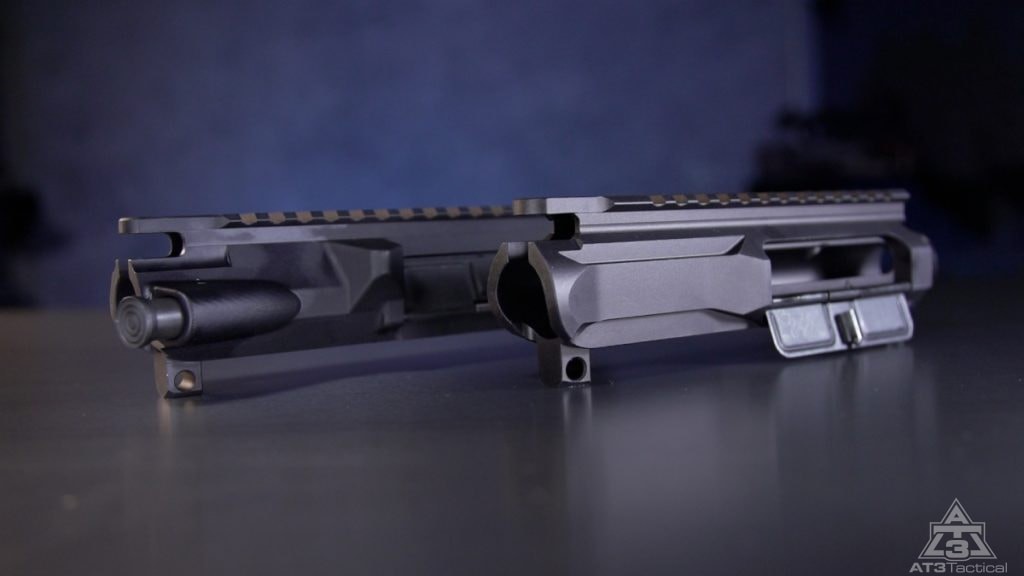
Honorable Mention – Backup Iron Sights
Most off-the-shelf AR15 rifles come stock with a set of iron sights these days. They will either flip up by manually manipulating them upward or the most popular versions will have a spring-assisted button or latch in order to deploy them.
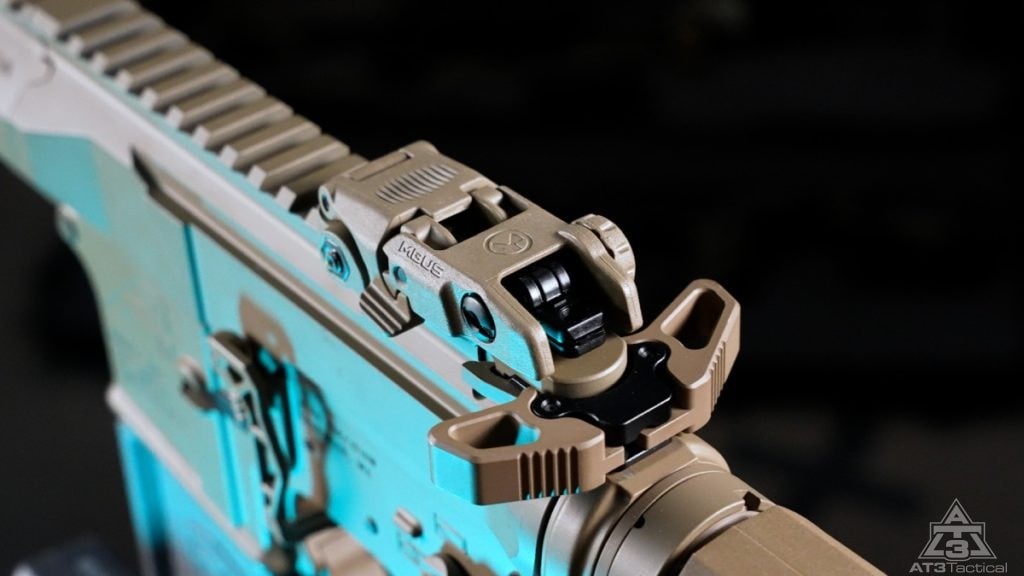
That is all the AR-15 buttons and controls covered. Looking for the complete low-down on every little piece? Check out our Ultimate AR-15 Guide!
Loading and Making Ready To Fire
Let’s walk through loading and prepping to fire. Follow these steps exactly to avoid issues. Handling a ready-to-fire AR requires the same safe protocols that were mentioned earlier.
Snap caps (dummy rounds) are great for practice. Just keep live ammo far away from your snap cap stash!
Let’s break things down by bolt position!
AR-15 Bolt Closed Operation
Most of the time your AR-15 will have its bolt fully into battery. The proper operation regarding a rifle with a bolt that is in the forward (closed) goes as such:
- Place a magazine (loaded with snap caps) into the magazine well.
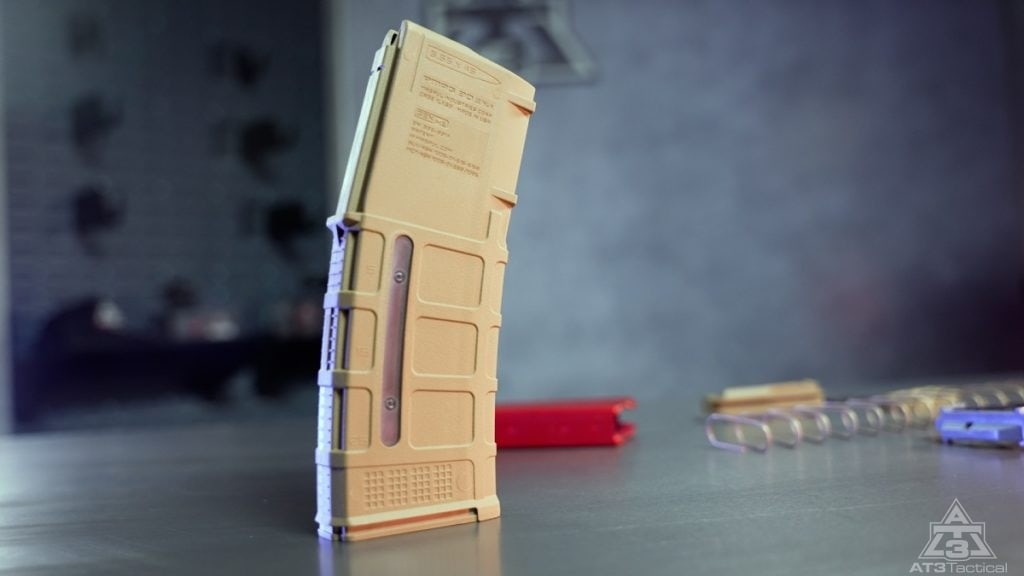
- Grasp the charging handle and pull it back until it stops. Releasing it will launch the charging handle (and internally attached BCG) forward and load a cartridge.
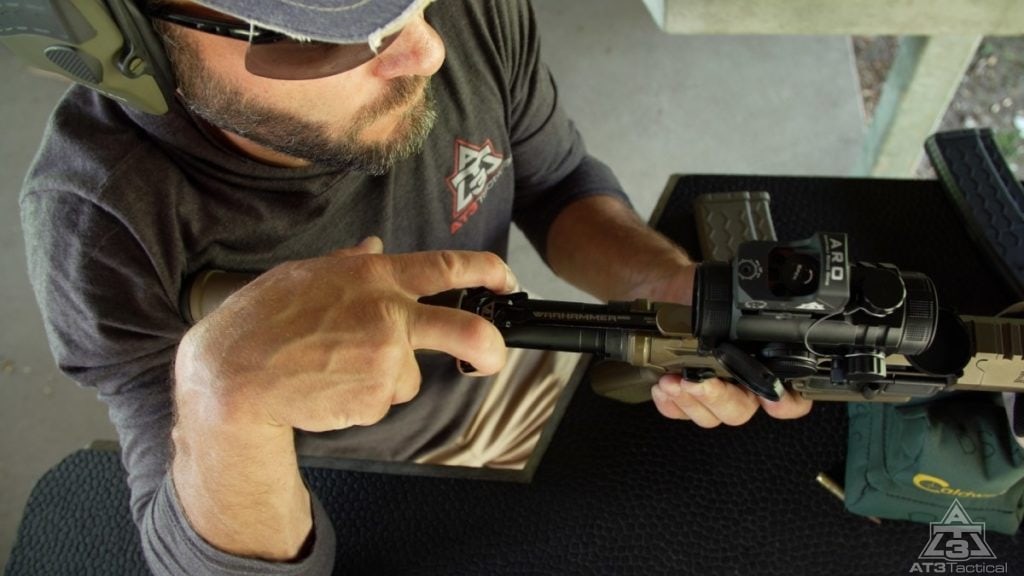
AR-15 Bolt Open Operation
In the event your AR-15 is already locked open the steps alter slightly. The proper process regarding a rifle with a bolt that is in the rearward position (open) goes as such:
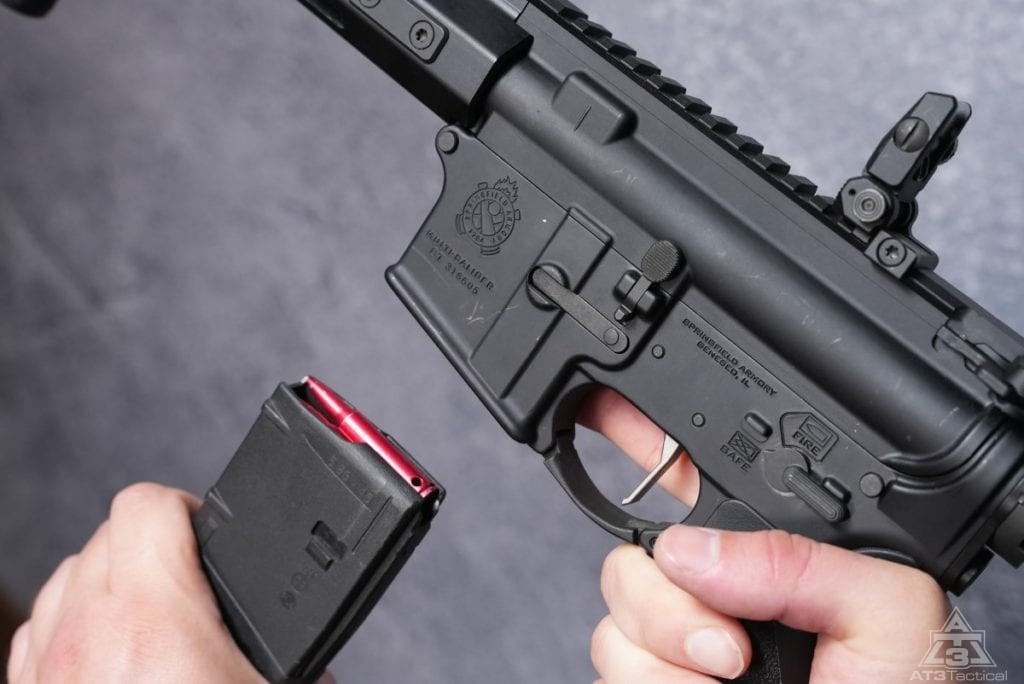
- Press the topmost portion of the bolt catch in order to release the bolt.
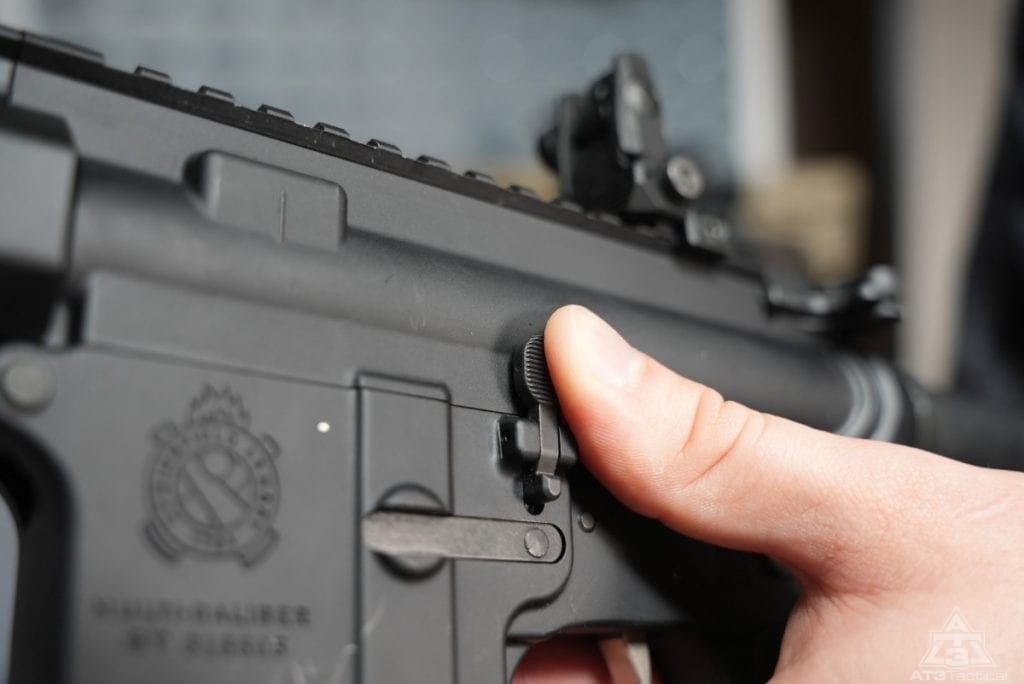
Alternatively, you can pull the charging handle rearward and slingshot it just like in the bolt-closed operation.
AR15 Unloading & Jam Clearing
Just like any machine out there, the AR15 can have a jam or two. Besides that, there may come a situation where unloading and clearing a rifle is necessary. Both situations can go as follows:
- Place the firearm on safe and keep things pointed in a safe direction.
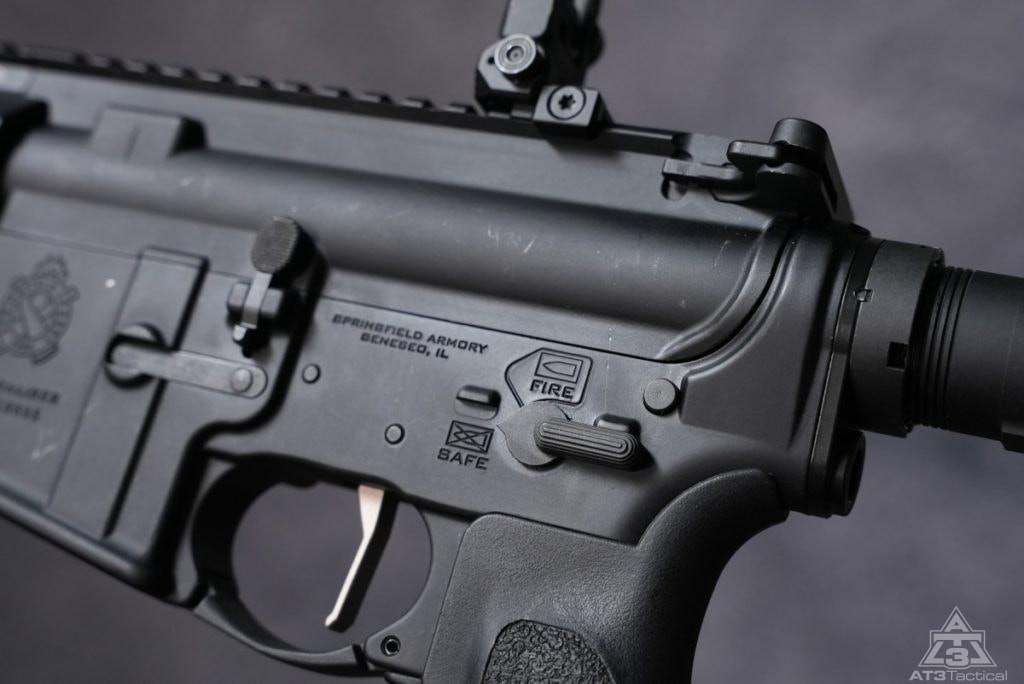
- Remove the magazine by pressing the magazine release button on the right-hand side of the receiver.
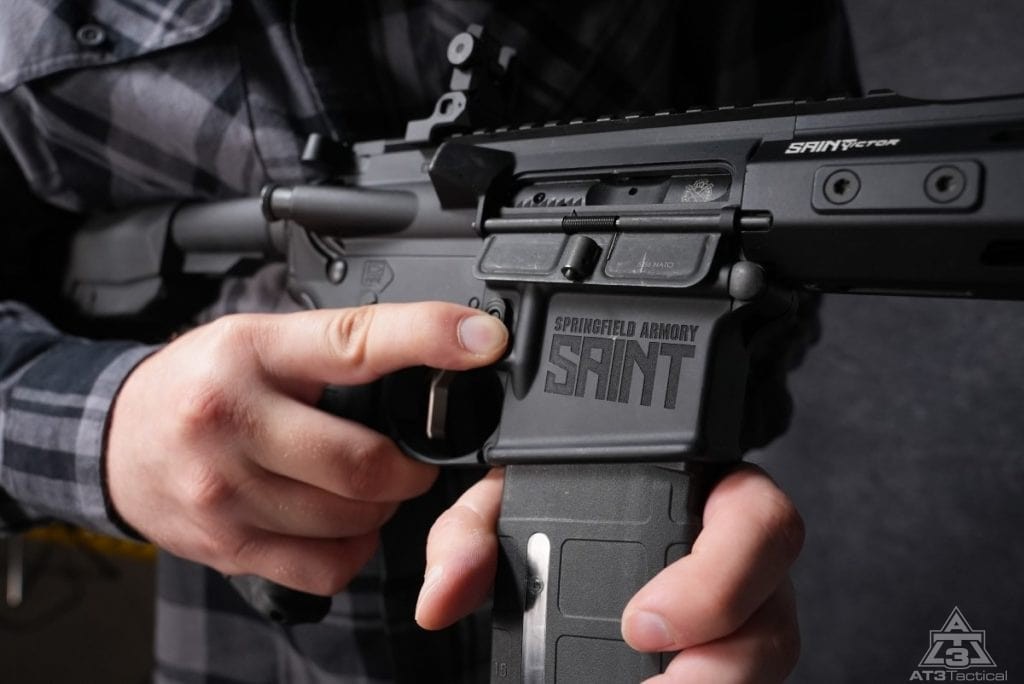
- Pull back on the charging handle and eject any live or spent cases. If there is a jam then the rifle can be tilted to the side to allow any stovepipes or loose cartridges to fall free.
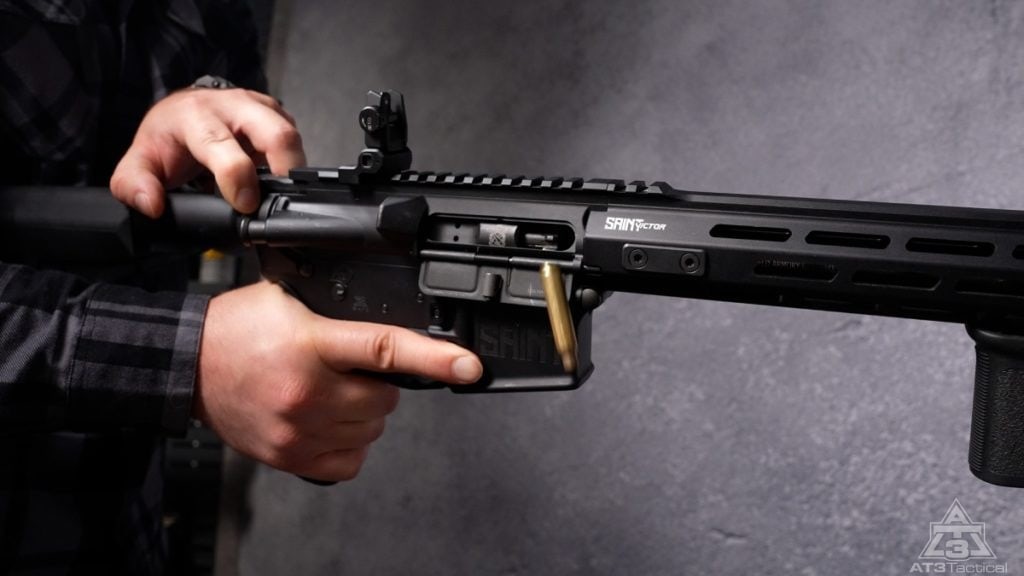
4. To lock the bolt rearwards, yank that charging handle all the way back while pressing the bolt catch paddle until it clicks into place. You’ll feel the charging handle go slack once it’s properly locked.
Note: The idle charging handle can be pushed back into the upper receiver. No biggie!
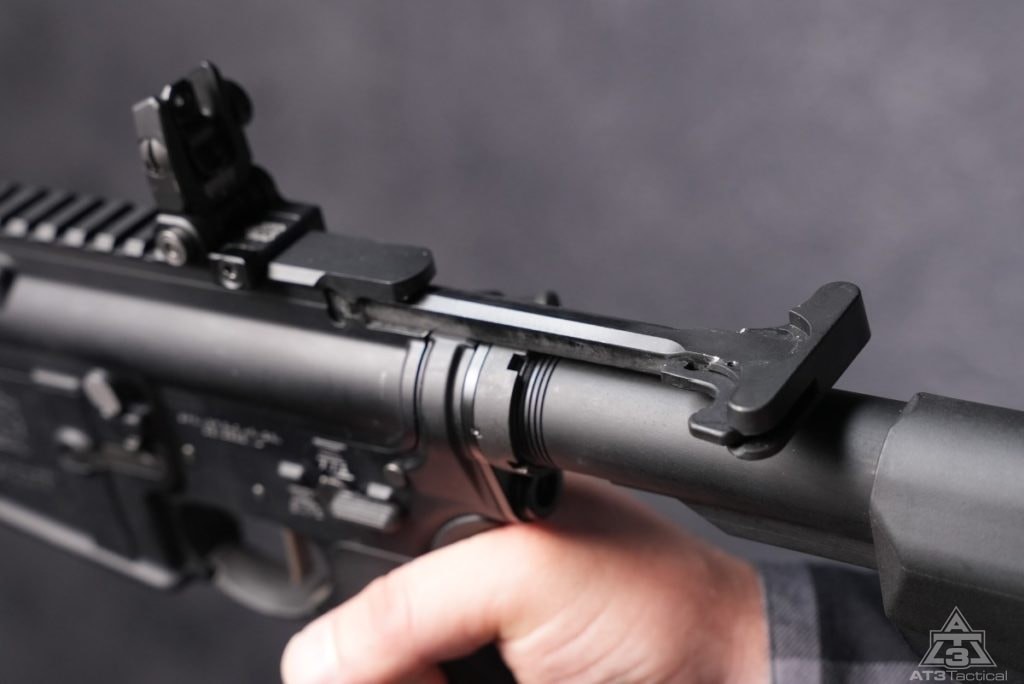
5. At this point the bolt should be locked open and the chamber and the space between the magazine well and the chamber can be inspected for any ammunition.
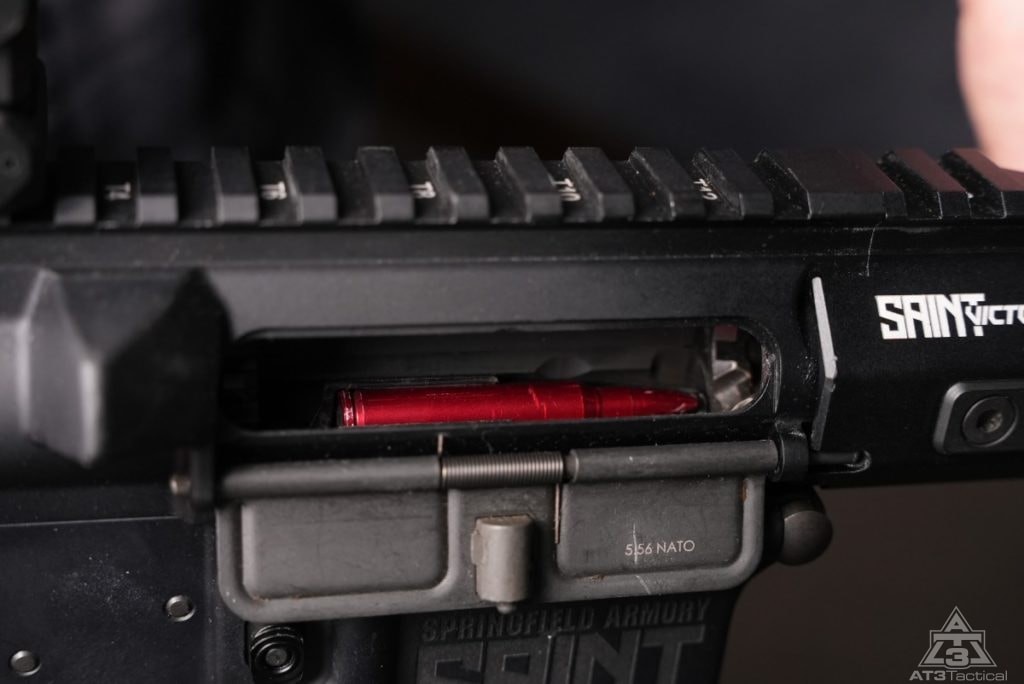
Common Malfunctions
Alright, listen up. There are four typical jams that can happen with your AR. Here’s the lowdown so you can get back to pew pewing quickly.
- First, failure to feed. This is when a fresh round gets stuck trying to enter the chamber from the magazine. No bueno. Just eject the magazine, tilt the rifle to the side, and rip back on the charging handle a couple of times to dislodge that stubborn brass nugget.
Why this can happen: Faulty/damaged magazines, buffer system is too heavy, or gas system is not getting enough, well, gas.
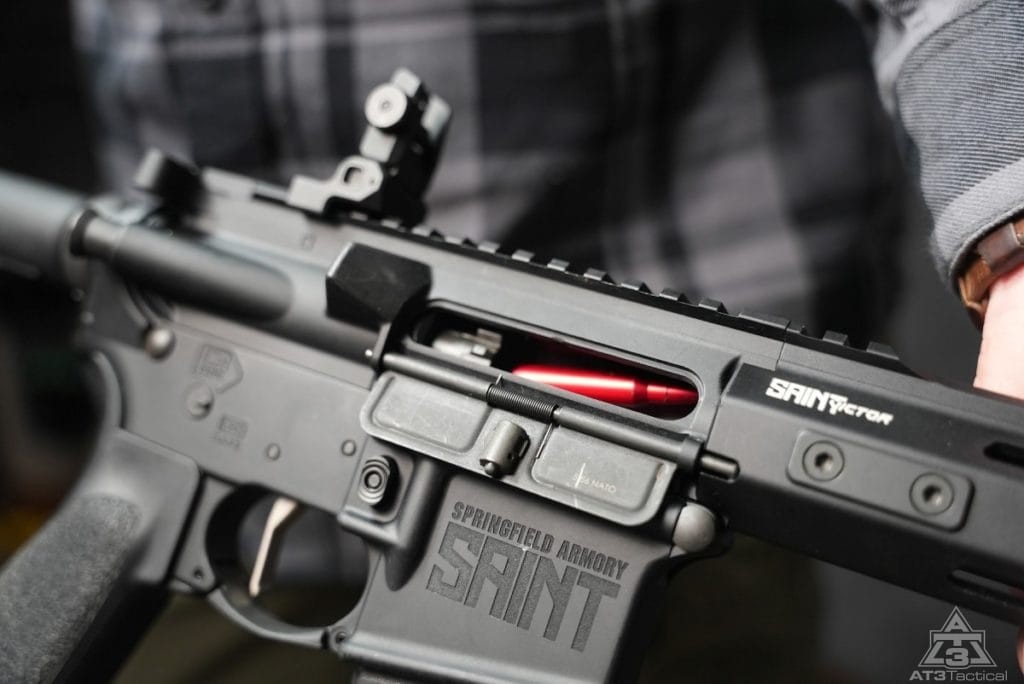
- Next up is failure to eject. This is when a spent round doesn’t want to leave the ejection port after you fire. The magazine release and/or charging handle again to the rescue. Crank that sucker back tilt the rifle to the side and shake so the loose piece of brass can escape the ejection port or magazine well.
Why this can happen: This can happen because of a busted or missing ejector (little spring loaded nub on the bolt face), gas system issues causing the bolt not to fully go back (short stroke), or ammunition-related issues producing the same short stroke problem.
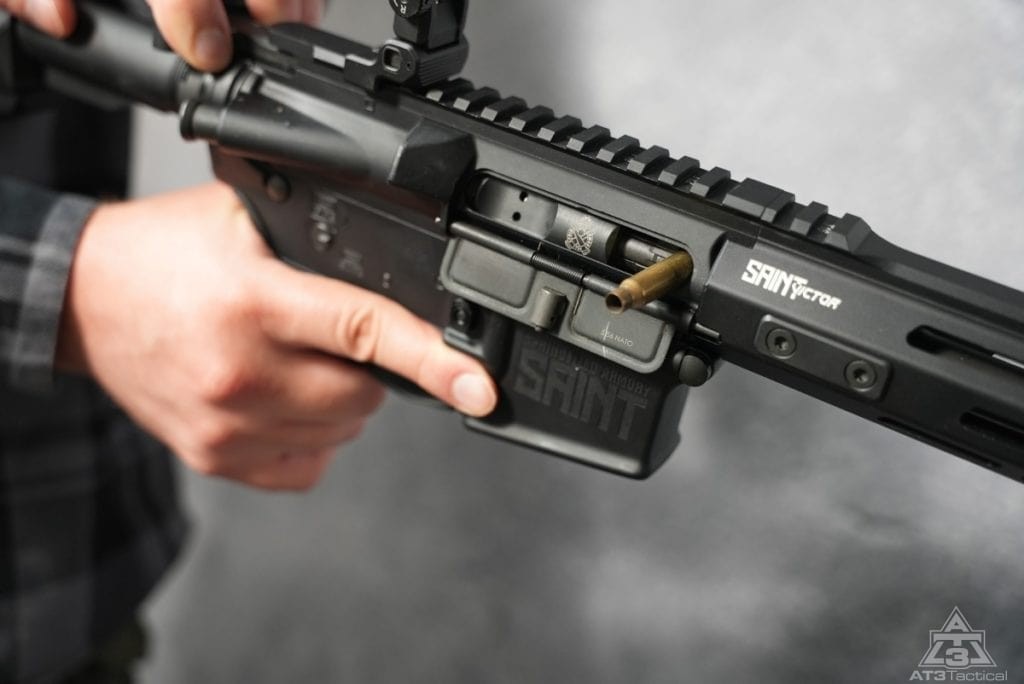
- Then there is failure to extract. This happens when a cartridge casing refuses to leave the chamber whether it be during the course of fire or manually manipulating the charging handle. If the bolt won’t grab it, a clearing/cleaning rod may need to persuade it out of the chamber.
Why this can happen: Mainly one of three reasons. One, the gun is dirty (more specifically the chamber). Two, the gun is new or has been abused and there is a metal burr in the chamber. Three, the cartridge (whether it be brand new or reloaded) has cracked/ruptured in such a way that it is now stuck.
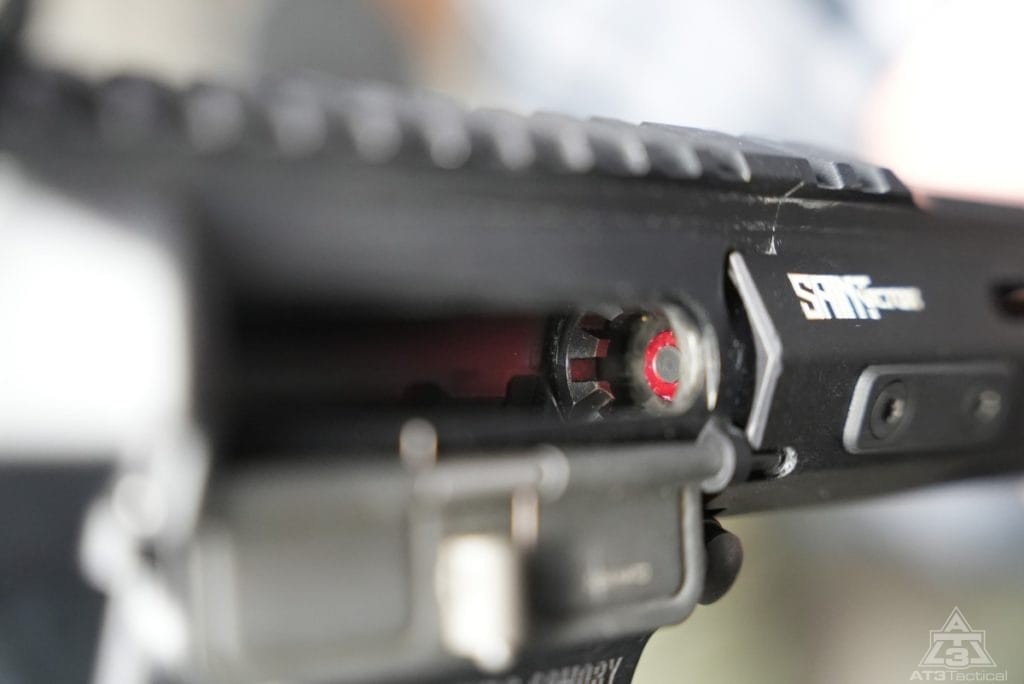
- Lastly, the dreaded double feed. Two rounds crammed into the chamber together. Not good at all. Lock the bolt back, rip out the mag, and dislodge the second offending round if possible.
When the chambered round is the only one left rack the charging handle a couple of times in order to extract and eject. Once clear, slap in a fresh mag and rack it again to get back in business.
Why this can happen: These suck. The main contributor to this is unfortunately user error. Sometimes (rarely) if you were to manually cycle the bolt in order to rack a round into the chamber when there was already one in there AND it had a failure to extract the one that was already there, then a double feed would happen. Alternatively, another problem would be a faulty/damaged magazine.
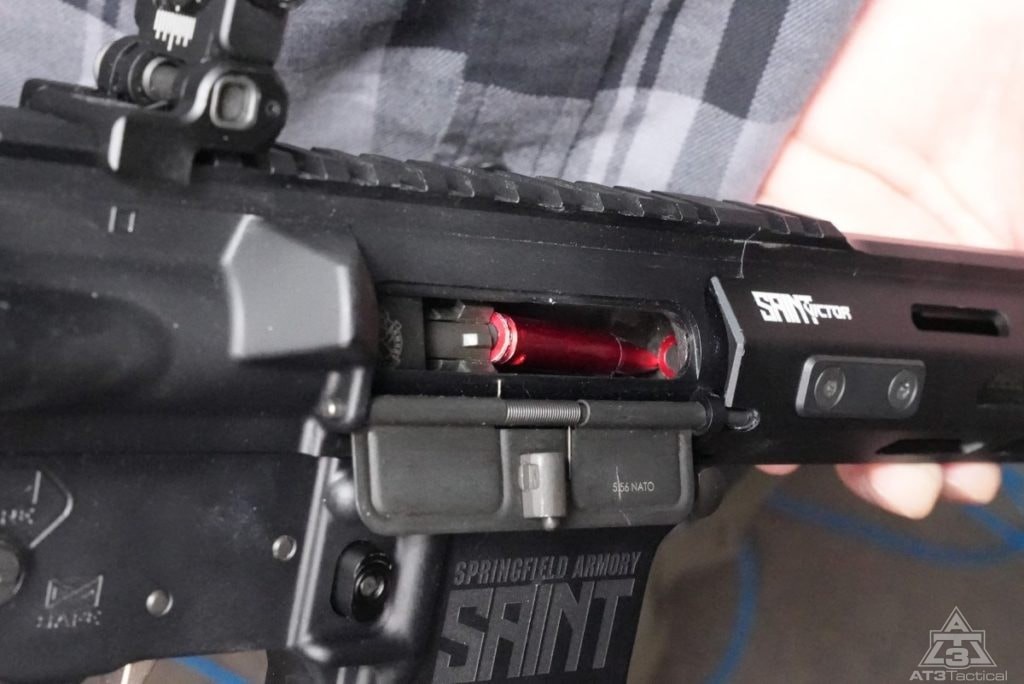
There ya go, amigo! Just remember, always keep that muzzle pointed downrange when clearing jams and you’ll be blasting again in no time. Ready to put some rounds downrange?
AR-15 Shooting Fundamentals
Eyes and Ears!
Yeah, Yeah, we know it’s such a cliche but ALWAYS have your eyes and ears on a range session. Throw on your tactical shades and earmuffs and look as prepared as you do cool. Because these days eyes & ears are actually very comfortable and stylish!
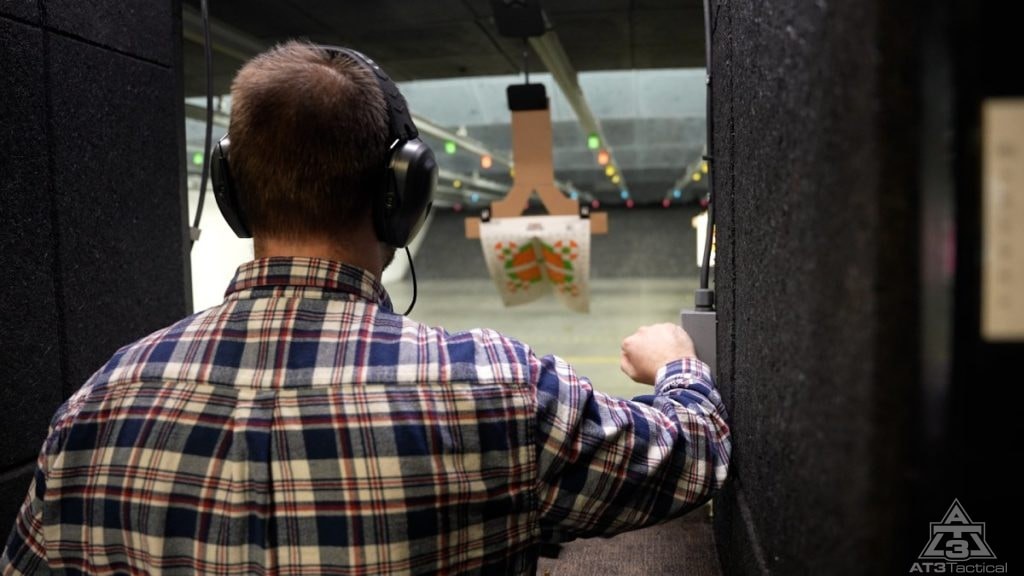
Proper Shooting Stance
To shoot accurately, proper shooting stance and grip are key. There are many different “types of stance” but as far as shooting the AR-15 goes the following is widely fielded:
- Feet shoulder width apart.
- Non-dominant foot forward(we are pivoting our body not doing lunges).
- Slight lean forward (stick dat butt out!).
- Grip the handguard/forward grip firmly with your support hand (non-dominant) to decrease muzzle movement.
- Your dominant hand should be at the pistol grip keeping you level and steady.

Firing The AR-15
Squeezing the trigger is tricky for new AR users. Don’t yank it! That’ll send your shots wild. Instead, slowly press straight back until the gun fires. Let the trigger surprise you when it goes bang.
Pro tip: Resting your finger pad on the trigger guard until ready helps avoid any jerking. We were all newbies once. With time and practice, that squeeze will start feeling natural. (dry fire sometimes…)
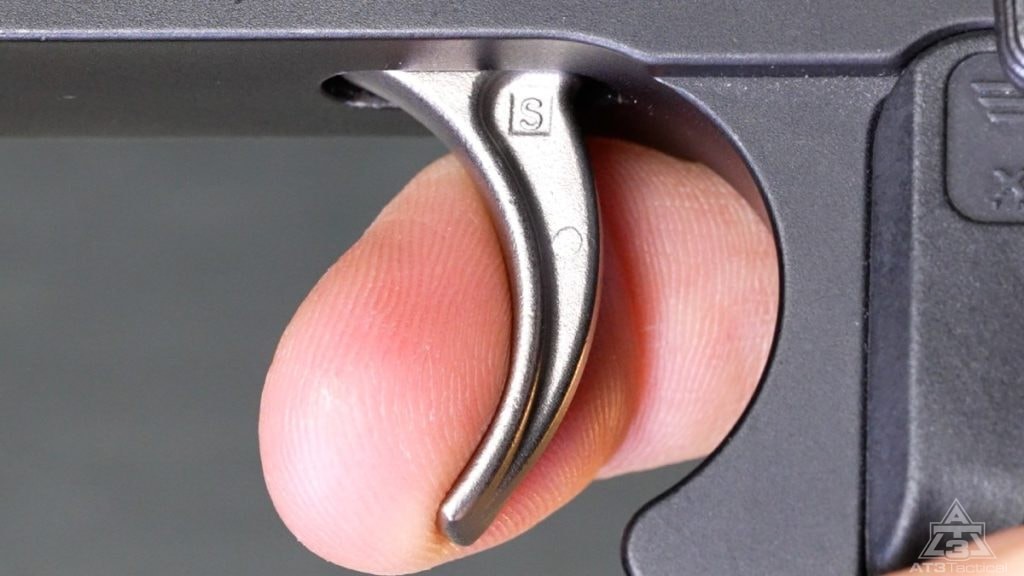
After you fire, go ahead and slowly release the trigger. Feel that sweet click of it resetting that we mentioned earlier? That’s your cue the rifle is ready to rock again. Don’t just let the trigger slam forward – control it on the way out.
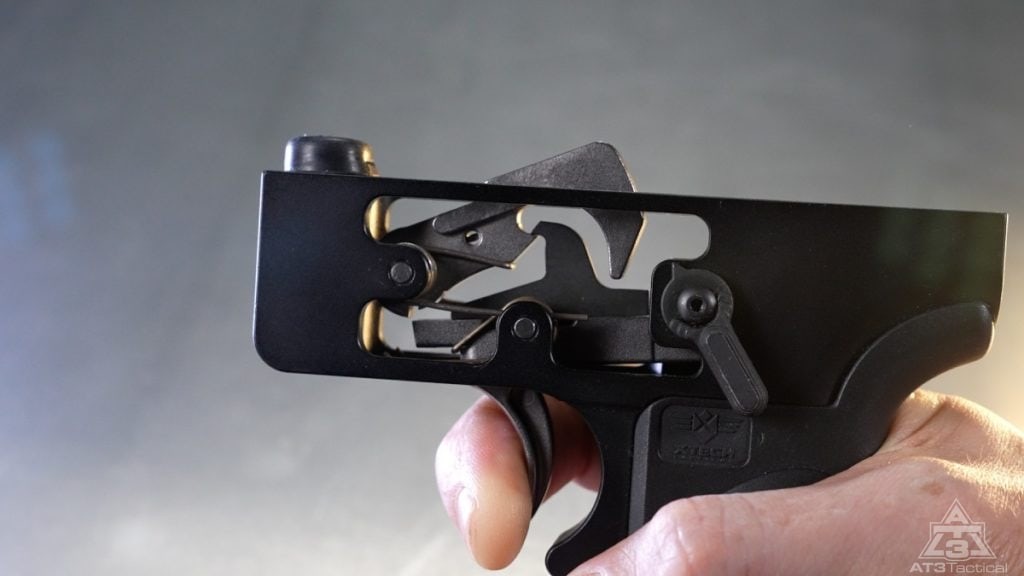
With a little practice, you’ll get the trigger timing down for quick accurate follow-up shots. The goal is to minimize the travel between shots. I know it feels funny at first, but it’ll start becoming second nature after some reps. Before you know it, you’ll have mastered that smooth trigger squeeze and reset like a pro!
Practice your trigger pull at home! Dry fire drills are an extremely common practice. If you want to simulate the full function and manipulation of your AR-15 try it with snap caps. The biggest message is do not have live ammunition nearby.
General AR-15 Terms & Definitions
Let’s quickly cover some key AR-15 terminology. Understanding these basic terms will help you master the platform.
- Semi-automatic – Fires one round per trigger pull. Ammo automatically chambers the next cartridge after each shot.
- Caliber – The diameter of a given bullet. In the case of most AR-15s it would be .223” for .223 Remington/5.56x45mm NATO
- Cartridge – The ammunition that the firearm is chambered for. 223 Remington/5.56x45mm NATO are the most common AR-15 chamberings but there is an almost never-ending and ever-expanding list of others.
- Chamber – Rear portion of the barrel that holds a single round ready to fire.
- Magazine – Not “clip”. Holds cartridges ready to feed into the rifle. 30-round mags are the most common.
- Muzzle – Front end (“business end”) of the barrel where the bullet exits.
- Bolt – Slides back and forth to load/eject rounds. Has the firing pin and extractor.
- Charging Handle – Tool to manually cycle the bolt to chamber a round or clear jams.
Brief History of The AR-15
The AR-15 has been around for decades, but it didn’t start out looking like the slick rifles we know today. Back in 1955, an engineer named Eugene Stoner first whipped up a clunky prototype called the AR-10. It had a steampunk vibe with wood furniture and vents everywhere. Just two years later, Stoner downsized his design into the more recognizable AR-15 chambered for .223 ammo. The new rifle caught the military’s eye, kickstarting mass production. And the rest is history! Pretty crazy how far the platform has come.
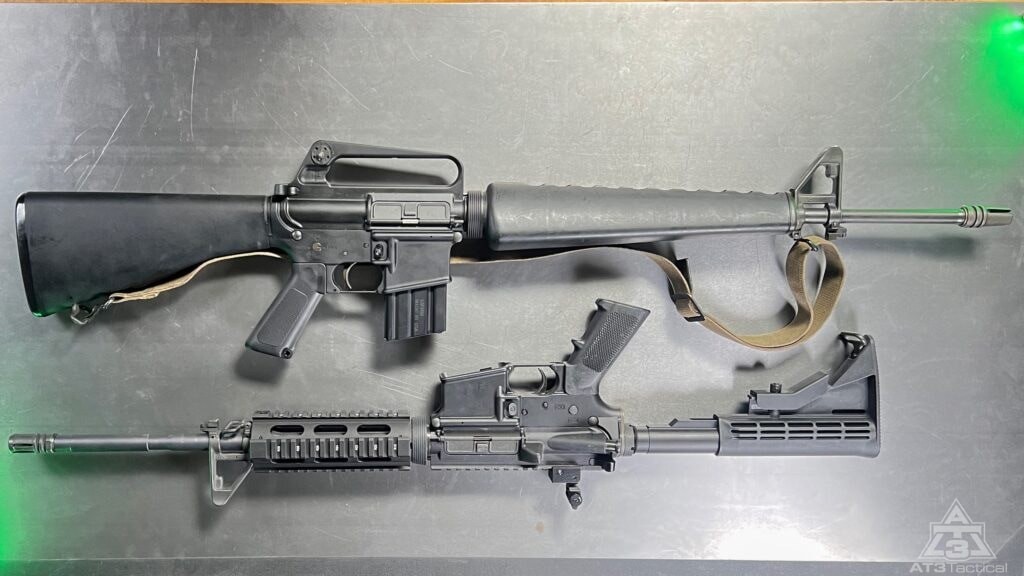
Hankering for a more in-depth analysis of the wonderful history and lineage of the AR-15? If you are a history buff like me you will love this chunk in our Ultimate AR-15 Guide. If you want to know all the little developmental differences and collect them all we have dissected all of them in our M4 vs AR-15 vs M16 – The Ultimate Guide.
Unloading Some Key Takeaways
After reading this beginner’s guide, you should have a solid grasp of the essentials to safely and effectively operate an AR-15 rifle. The biggest takeaways would be getting to know your AR-15s parts and how they work, like the safety and mag release. Make sure you’re loading and clearing it safely, always pointing the muzzle in a secure direction. Practice a smooth trigger press for better accuracy, work on fundamentals like stance and grip, and don’t panic when there’s a problem. You got this and we are always here to help!
Parting Beginner Tips & Reminders:
- Start slow and focus on proper form before building speed. Don’t rush your shots.
- Use only quality brass ammunition to avoid malfunctions. No reloads or junky steel-cased ammo.
- Expect some jams and misfeeds when starting out. New guns can induce some break-in pains. Keep muzzle downrange and engage the safety if it happens.
- Consider taking professional training courses to build your AR skills faster.
- Bring along a range bag with ammo, mags, eyes/ears, tools, cleaning kit, etc. Stay organized.
- Maintain your rifle after every session. Keep it clean, lubed, and properly assembled (we have covered this in-depth)
- Invest in a bunch of spare magazines – reloading is faster with pre-loaded 30-round mags!
FAQs
This is really up to you. When choosing a range for your AR-15, consider the type of facility and experience it offers. Indoor ranges provide amenities and help but cost more. Outdoor ranges may be cheaper yet potentially lack assistance. Prioritize finding knowledgeable staff dedicated to improving your skills over facilities alone. Seek out patient, experienced shooters who can provide instruction and feedback as you progress. The right range with supportive regulars will accelerate your AR-15 proficiency.
The AR-15 uses “STANAG” magazines. In short, they are a standardized type of magazine so any magazine advertised as an “AR-15 Magazine” will interchange with no issues.
AR-15 rifles can be extremely accurate and obviously, the chambering can come into play. Let’s say we have a standard AR-15 with a 16″ barrel chambered in 5.56. Most would say that it can shoot accurately out to 500-600 yards. There are a lot of variables but to summarize with the right mix of things like ammo, optics, barrel length, weather conditions, etc. the AR-15 is suitable for most accuracy needs.
Commercial off-the-shelf AR-15s will be semi-automatic. This means that with one pull of the trigger, one round will be fired. Without getting too into the NFA weeds fully automatic rifles are obtainable but it is a lengthy and costly process. The average Joe will never own a fully automatic weapon.
A very relative question. 5.56 NATO is the most common and in many ways, it can be a do-all cartridge. This of course means it does most jobs well enough but not great. 300 BLK may be better for home defense, suppression, deer hunting, etc. 22LR may be better for fun and practice. The list goes on and there will always be a cartridge that does one thing fantastically and most other things alright.
One Last Tip
If there’s anyone that knows the AR-15 platform, it’s the US military. As a special offer for our readers, you can get the Official US Army Manual for AR-15/M4/M16 right now – for free. Click here to snag a copy.


When using snap caps in a magazine, does the trigger need to be pulled each time before pulling the charging handle back in order for ejection to take place?
Hello!
No. Not necessarily. The charging handle can be pulled back while a snap cap is in the chamber and by doing this it will be extracted and ejected. The only thing the trigger will do is help you practice your trigger pull and get used to the feel. Regardless your order of operations, you will always end up pulling the charging handle back in order to extract and eject the snap cap.
Great guide for newbie AR owners. It’s a wonderful platform to introduce oneself to firearms ownership.